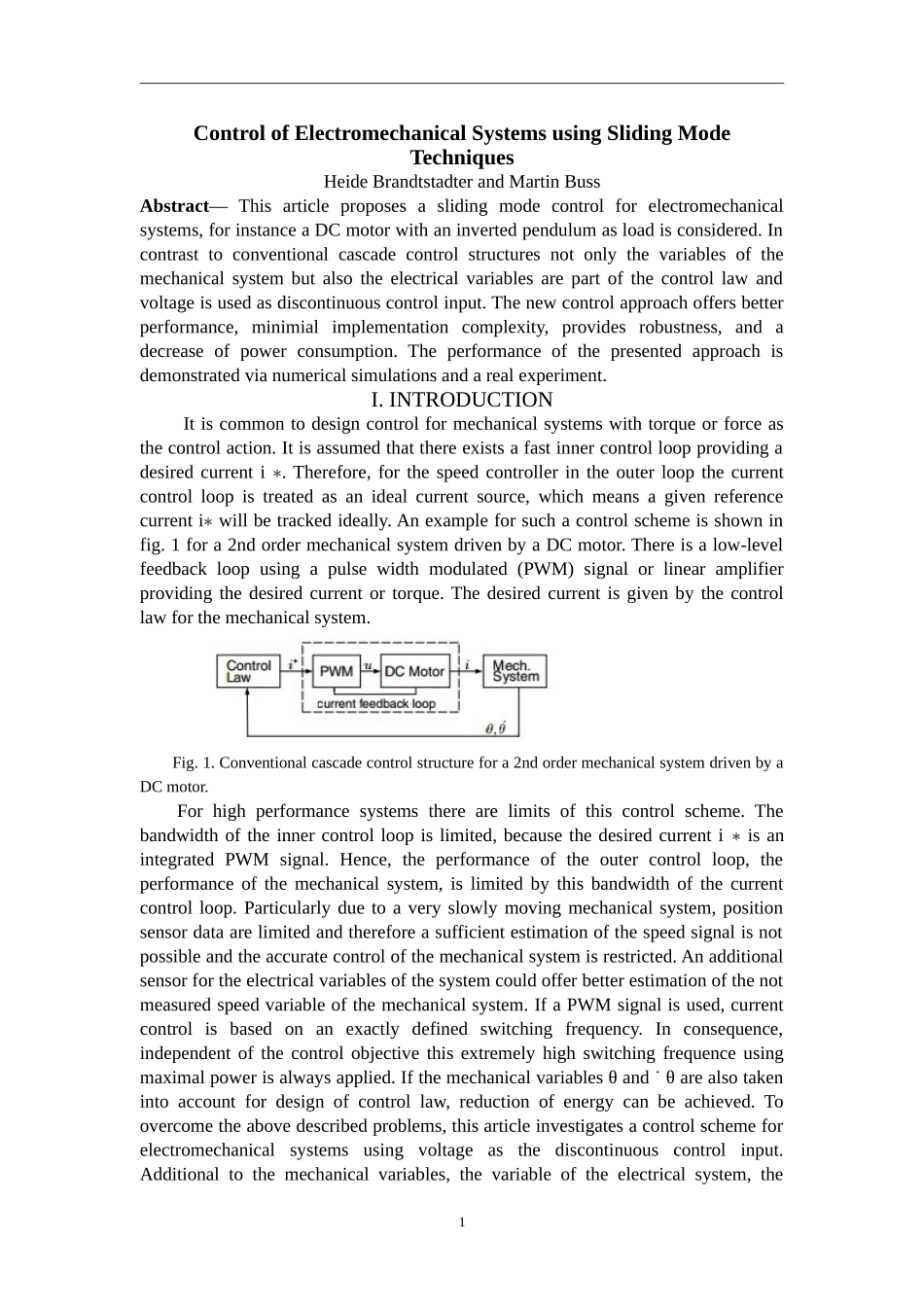Control of Electromechanical Systems using Sliding Mode TechniquesHeide Brandtstadter and Martin BussAbstract— This article proposes a sliding mode control for electromechanical systems, for instance a DC motor with an inverted pendulum as load is considered. In contrast to conventional cascade control structures not only the variables of the mechanical system but also the electrical variables are part of the control law and voltage is used as discontinuous control input. The new control approach offers better performance, minimial implementation complexity, provides robustness, and a decrease of power consumption. The performance of the presented approach is demonstrated via numerical simulations and a real experiment.I. INTRODUCTION It is common to design control for mechanical systems with torque or force as the control action. It is assumed that there exists a fast inner control loop providing a desired current i ∗. Therefore, for the speed controller in the outer loop the current control loop is treated as an ideal current source, which means a given reference current i∗ will be tracked ideally. An example for such a control scheme is shown in fig. 1 for a 2nd order mechanical system driven by a DC motor. There is a low-level feedback loop using a pulse width modulated (PWM) signal or linear amplifier providing the desired current or torque. The desired current is given by the control law for the mechanical system.Fig. 1. Conventional cascade control structure for a 2nd order mechanical system driven by a DC motor.For high performance systems there are limits of this control scheme. The bandwidth of the inner control loop is limited, because the desired current i ∗ is an integrated PWM si...


